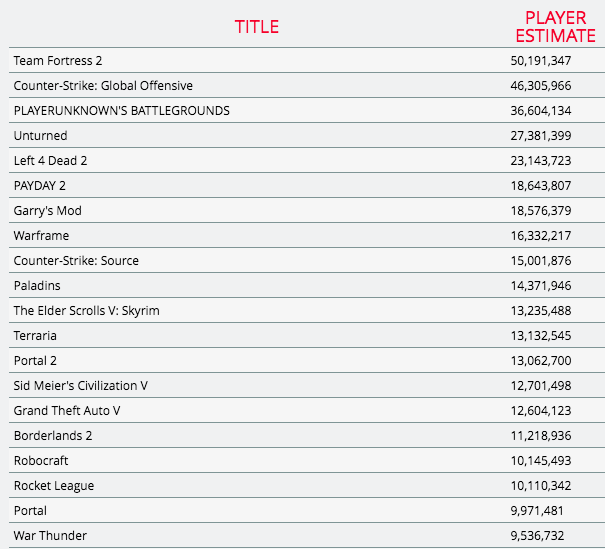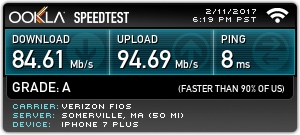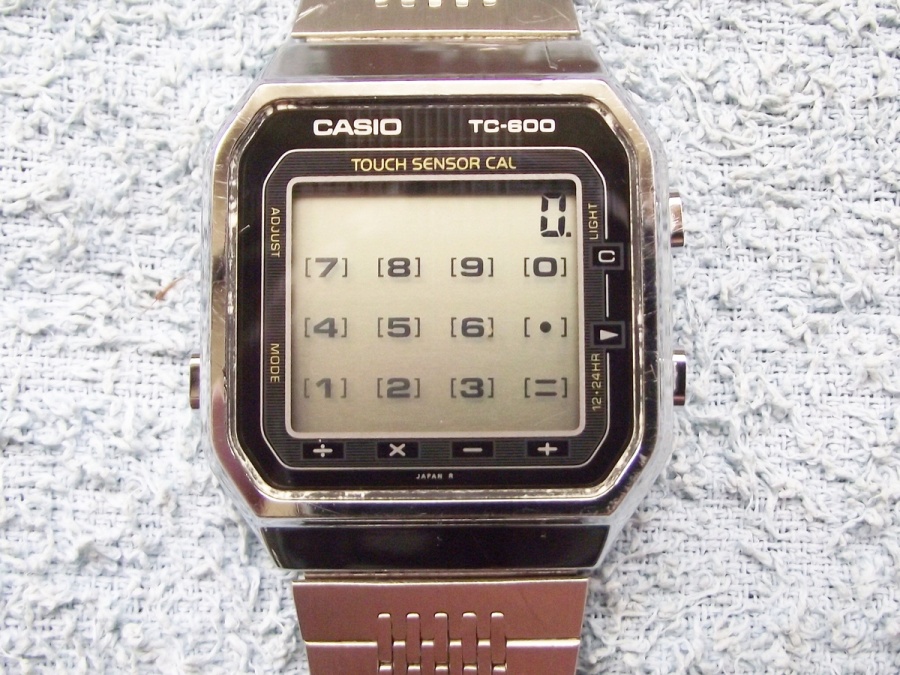So the Vision Pro has been unveiled, and the reception has been a mixed reality all its own. As we wait 6+ months for the actual product to be released, how should we feel about it? Let down? Inspired? Skeptical? After reading and watching many of the smartest tech reviewers talk about their 30 minutes in Applespace, I’m not sold – but I’m also not dismissing it outright.
For context, I’ve been an Apple partisan since 1984, when at age 11 I saw my uncle’s original Macintosh and was seriously intrigued. I was already using Apple ][ computers at school, and I think around 1985 my dad bought us an Apple ][c for home. In retrospect it was clear I was bound for a career in tech – I used the hell out of that box, and every subsequent Apple product we/I owned thereafter. In fact there hasn’t been a moment since then that I haven’t owned some sort of Apple computer, and now…well, now it’s embarrassing how deep my family is into the ecosystem. Unlike now I was not always able to afford the newest products when they were released, but that didn’t stop me from watching the keynotes, installing the Mac OS X Public Beta on my PowerMac G3, and gaming on Macs. (I still have Bungie’s original Marathon game floppies sent to me in a hand-addressed envelope, which must be worth…nothing.) I can recall poring over my Appledesign book, loving the products without being able to articulate exactly why.
Suffused with all of this Apple history, I tuned into last week’s WWDC keynote with an excitement I hadn’t felt in quite some time. After wading through the hours of xOS new features and some decidedly un-Jobsian moments (Federighi’s guitar shenanigans, the cringeworthy “one more thing” from the anti-showman, Tim Cook), my reaction to the Vision Pro announcement was…measured.
First of all, I agree wholeheartedly with Mac Address host Jonathan Horst’s take that live Apple events simply must come back. As difficult as it might have been for a stage human to demo an AR headset, we might have felt more connected to the tech and the experience they were selling. As it was we had to settle for what has become the standard, prerecorded, glossy demo, with such slick production that it’s hard to even trust. The same questions we ask of game trailers should apply here – is this a fully rendered demo, or in-engine? Do all of these features work today or is it smoke-and-mirrors beta tricks like the original iPhone demo? Apple wants you to believe, but we can be forgiven for having doubts. Doubts that would have been dispelled by live demos.
So immediately, and somewhat ironically, the demo for the product that removes the user from reality felt removed from reality itself. (Fortunately the rumored name of “Reality Pro” missed the mark, which in retrospect was a wise decision.) But it rapidly became clear that Apple product designers were keenly aware of this fundamental problem with AR/VR headsets, and the differences between their philosophy and Meta’s Quest line were instantly apparent. In a time when VR is mostly about underproduced gaming experiences or fitness, Apple went straight to showing us the Vision Pro in a work setting, emphasizing the tight integration of the new RealityOS with all their existing, legendary software ecosystem. They took pains to show how a user wearing the headset would still feel connected to the real environment around them, with special intelligence recognizing when others enter the frame and popping their images through the AR veil. There’s also a dial on the gear itself that allows the user to decide just how immersive (VR) or integrated (AR) they want their virtual elements to be with respect to the room they’re in. Rather than artificial controllers, natural interactions like eyes, hands, and voice will be used to control RealityOS. They even went as far as to create “Personas,” or digitally drawn avatars that recreate the wearer’s otherwise obscured face during FaceTime calls. (This last bit has been widely panned as “uncanny valley” territory by most reviewers, and based on that feedback I really hope Apple throws huge amounts of resources at making it better for launch.) All of these moves aim to break down the natural barrier any human would feel while wearing, well, a literal barrier over their eyes. Oh, did I mention that the headset also has an outside screen that can display the user’s eyes in real time? Totally not creepy or robot-like.
Contrast all of this with Zuckerberg’s precious “metaverse,” that nebulous place that you can access using the company’s Quest line of VR headsets. The comparison between the Quest 3 product launch site and Apple’s Vision Pro marketing shows just how profound the difference is between the two companies’ approach to this tech. Where Apple never stops emphasizing connection, storytelling, and human interaction, Meta seemingly never shows another human near a Quest user. Even with the Quest 3’s improved pass-through outer cameras, the emphasis is on awareness of the user’s physical environment and the objects in it – not other people. This shouldn’t really be surprising, since one company is run by a famously odd, robotic, vaguely anti-social man while the other has consistently woven human stories and connections through their product lines for decades. But nothing quite brings out these radically different worldviews like bulky gigatech goggles that by their very nature put off anyone else in the room.
By now I hope it’s clear that I am trying really, really hard to put a positive spin on the Vision Pro product. I very much want to be excited about it – after all, it may be Apple first original product in ten years, but it doesn’t look first-gen at all. They definitely shot the parts cannon at what is undoubtedly the most advanced pair of ski goggles in California history. They came up with a novel design philosophy unlike any company has to date. Heck, they designed an entire chip just to process the sensor inputs. What other company can do this? None other company, that’s what. But, BUT – all of these truths cannot counter the simple fact that WIRED’s Lauren Goode just brilliantly stated in her piece “Hands on With Apple’s Vision Pro: The Opposite of Disappearing“, which is that this is the first Apple product in quite a while that intrudes rather than recedes. With the current state of technology, all truly AR/VR headsets must be intrusive. It goes against so much of Apple’s design philosophy to place the product itself so front and center – they much prefer to emphasize the applications that their products make possible, and then segue into the hardware and software behind the magic. (to wit, this is how the entire Vision Pro infomercial was ordered – apps first, hardware last). Was Apple pressured into releasing a product into this immature space? Did they calculate that releasing such an un-Apple gadget into a nascent ecosystem was simply necessary to stake their claim until they can do better? Will the mediocre first impressions of so many savvy tech reviewers change once the final hardware comes out?
If we look back at Apple’s history, I think we can see some precedents here. Many, many of their first-gen products had splashy designs upon first release, but in retrospect their performance was lackluster and their designs in need of several iterations. The first iMac – cool-looking but nothing compared to what we ultimately got. The first iPods were groundbreaking but got substantially better with solid-state storage and touch-only interfaces. Even the first Powerbooks were clunky, boxy, and low-res compared to the sleek iBooks and MacBooks they evolved into. Apple has given us one final clue that the Vision Pro is not the AR-for-the-masses they’re aiming for – the price. $3500, even before custom Zeiss lenses and extra battery packs, says very loudly that Apple wants to keep this device out of the hands of us plebes and squarely in the offices of developers and early adopters. Let’s be honest – a company with a market cap of nearly three triliion dollars (holy hell can that be true yes it’s true, actual figure $2,857,983,796,910 as of today) could probably afford to make this headset a loss leader and sell it for $1500. They very notably did not do this. I get it, they likely spent hundreds of millions on hardware and software development, but c’mon guys – three trillion dollars. This is the same feeling I get when my alma mater hits me up for small-dollar Annual Giving while sitting on an endowment closing in on $40 billion. They do not need our support.
Hence the “provisionally” in this post’s title. I do not, in fact, believe that this product was a huge misstep for Apple – I simply believe it lacks the context that the next few years will bring in terms of hardware shrinkage and software refinement. I think that the first round of users, which I likely will not join, will contribute many hours of usage metrics and feedback that will guide future development. I have a good deal of faith that the talented minds at Apple, working in their colossal circular hermitage, already have a fair idea of where they want this product to end up in five years, and it ain’t this. What we have now is the Vision Pro, beta edition, subject to change, for explorers only, standard disclaimers apply. What we’ll have next year, or in 2025 or beyond, may suddenly start to look much, much more compelling.









